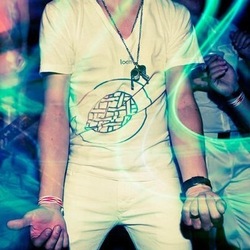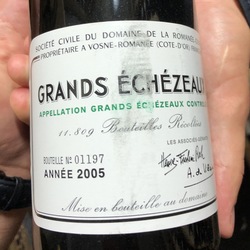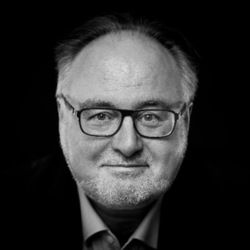Jean Bernard Larrieu
Château Montrose
Saint-Estèphe Cabernet Sauvignon Blend 2014

Domaine Bernard Morey et Fils
Clos Saint Jean Chassagne-Montrachet 1er Cru Chardonnay 2006
17. (Back to work! Left out many wonderful wines...). Somewhat citrusy nose, good acidity, while buttery, indeed rich. M+ length. — 7 years ago
Jean-Bernard Larrieu
Evidéncia lapeyre Petit Manseng Blend
Huge apricots on the nose, like dunking one’s face into a fruit bowl. — 8 years ago
Bernard Dugat-Py
Champeaux Gevrey-Chambertin Vieilles Vignes 1er Cru Pinot Noir 2008
Unexpectedly deep colour. Very expressive (but not as sexy as Jean Grivot wines). Dominant oak, sour cherry, red flowers, pickles and animal notes. Powerful and rustic palate, though well structured. Seems like it has a huge potential, can't believe it's already 13 years old! For my taste it lacks elegance and complexity. High rating is partially because of potential.
Tasted on 2021-08-26 — 4 years ago
Jean-Bernard Larrieu
Vitatge Vielh de Lapeyre Jurançon Sec Gros Mansengs Blend
Malo, peche, nootjes, kweepeer. Warme neus, strakke mond, citroenzuur in mond — 6 years ago
Château Tronquoy-Lalande
Saint-Estèphe Red Bordeaux Blend 2010
"One of the Finest Wines I have ever tasted from Tronquoy Lalande, this estate has been resurrected by the Bouygues family (also the owners of Chateau Montrose) capably assisted by Jean Bernard Delmas, the Wine Architect at Haut Brion between 1961 and 2003. A Blend of 50% Cabernet Sauvignon, 40% Merlot and a whopping 10% Petit Verdot, the 2010 boasts a dense purple color as well as a big, sweet bouquet of violets, black currants, earth and subtle oak. Admirable concentration, sweet, well-integrated tannin and a surprisingly sexy, opulent mouthfeel result in a Gorgeous Wine to drink over the next 12-15+ years". [Score: 90/93 Robert Parker, Wine Advocate (194), May 2011 / Score: 92 (205), March 2013] — 7 years ago
Bernard Boisson-Vadot
Bourgogne Blanc Chardonnay 2016
From one of the relatively unknown and elite producers in Burgundy and a close friend of the illustrious Jean François Coche’s son, Raphael. Even this Bourgogne Blanc comes from old vines in Meursault which clearly evident in the wine. Vibrant energy and acidity intertwines with lemon curd, hazelnuts, a pixelated minerality and a striking intensity. Maybe lacking the depth and length of premier cru burgs, but what a tremendous entry level Bourgogne this is and a true over performer. — 5 years ago
Bardin Jean-Jacques
Cuvée Vautrepain Pouilly-Fumé Sauvignon Blanc 2017
With Thierry and Cousin Bernard and family in Normandy! Excellent white — 6 years ago
Jean-Bernard Larrieu
Santat! Mansengs Gros Manseng-Petit Manseng Blend
Energy through the roof. Knocks my socks off in purity and length/acidity 😳 — 8 years ago
Jean & Bernard Dauré
Chez Jau Muscat De Rivesaltes
Vintage 2007 - #Rivesaltes is perhaps out of fashion, but I like this Ambré a lot. It gives so much joy! Nice impression of chocolate, figs, dates. Great balance, sweet but not sticky. — 8 years ago







Alexandre Pagliano
We think something has changed at Montrose after the departure of Jean Bernard Delmas. Its not a bad wine by any means but the style is modern and extracted. At ten years this ie very drinkable and great quality but does not speak to its terroir as it used to. Hope its just one year… — 8 months ago